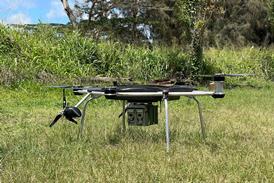Embraer arrives at this year’s ALTA Forum with its E-Jet E2 programme humming along as planned, with an unchanged entry-into-service target of 2018, says the company’s chief executive of commercial aviation Paulo Cesar Silva.
“Everything is running very nicely,” Silva tells Flightglobal. “We are really on time. The data is showing we should meet all the targets we have established for this aircraft.”
But despite the programme’s progress, Silva does not expect a major raft of orders for several years, until the major economies of the region rebound.
The continent’s two largest economies, those of Brazil and Mexico, remain hindered by weak economic growth and currency weakness compared to the US dollar.
“Brazil is going through a difficult moment,” says Silva. “This will not improve, in my view, until 2017,” he adds.
“In 2017, we start to see the light at the end of the tunnel.”
By then, carriers will likely begin to place significant aircraft orders, and financing may start to become available for airport infrastructure projects needed to fund aviation growth in countries like Brazil.
Even despite the struggling economies, Embraer sees sales opportunities from a number of carriers, like Copa, Azul and Aeromexico, says vice president of Africa and Latin America Simon Newitt.
Meanwhile, E2 work continues, with Pratt & Whitney PW1900G geared-turbofans recently undergoing testing on a Boeing 747 test bed.
Two of those engines, which will power the first E190-E2, will arrive at Embraer’s Sao Jose dos Campos manufacturing site in late November, says Silva.
The company expects to complete final assembly of that prototype aircraft “towards end of the year”, and achieve first flight by the second half of 2016.
Embraer intends to deliver the first E190-E2 in 2018, followed by the first E195-E2 by 2019 and the E175-E2 by 2020, he says.
Source: Cirium Dashboard
















